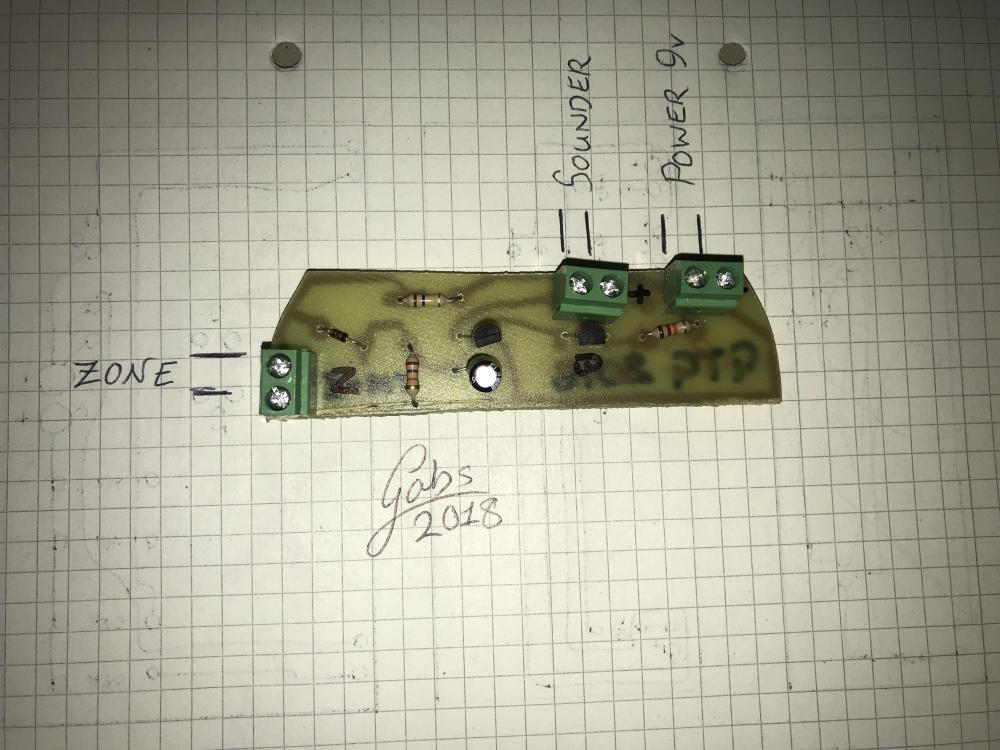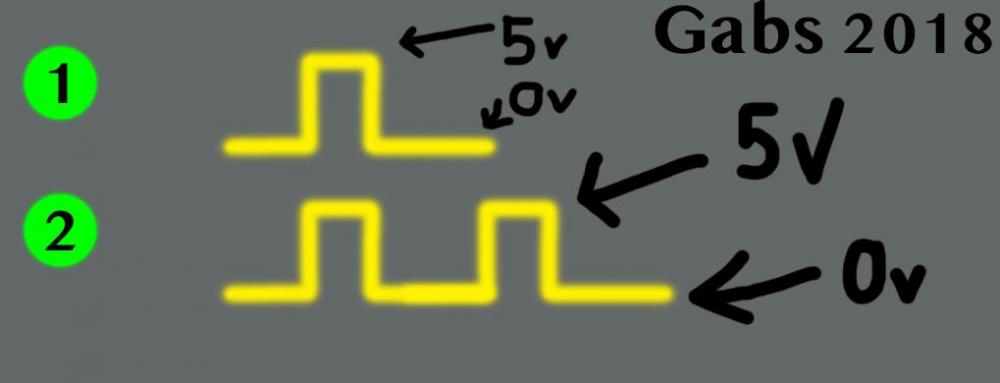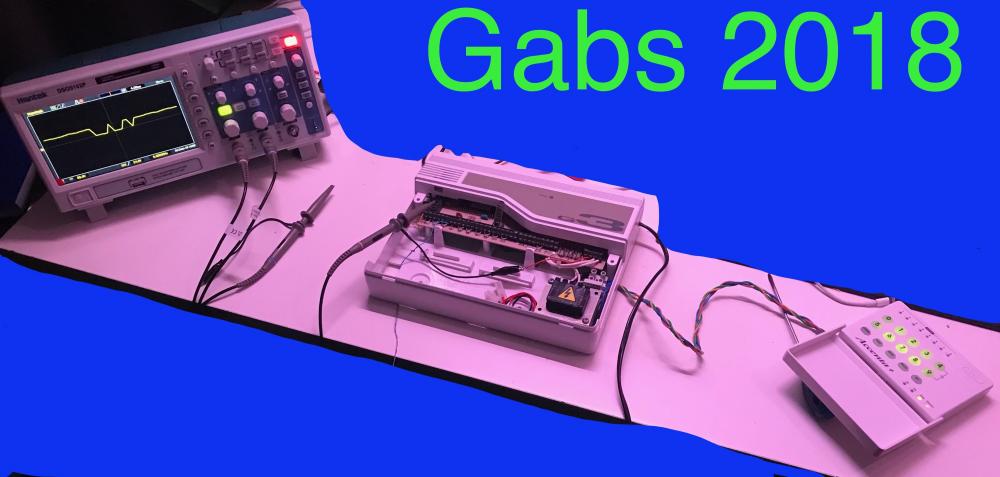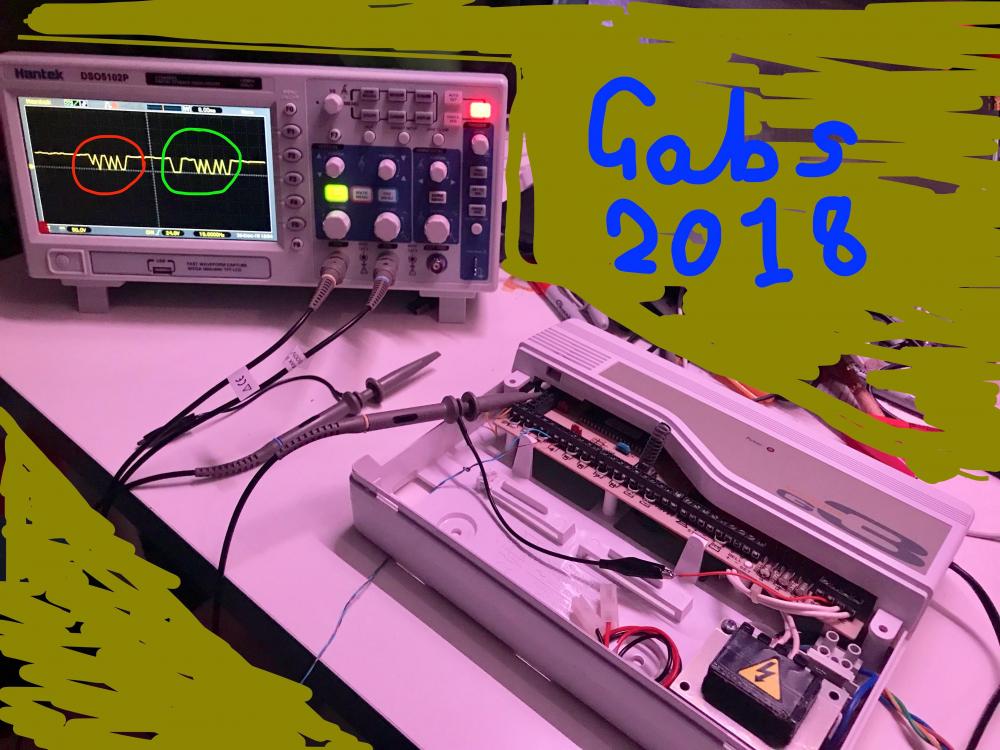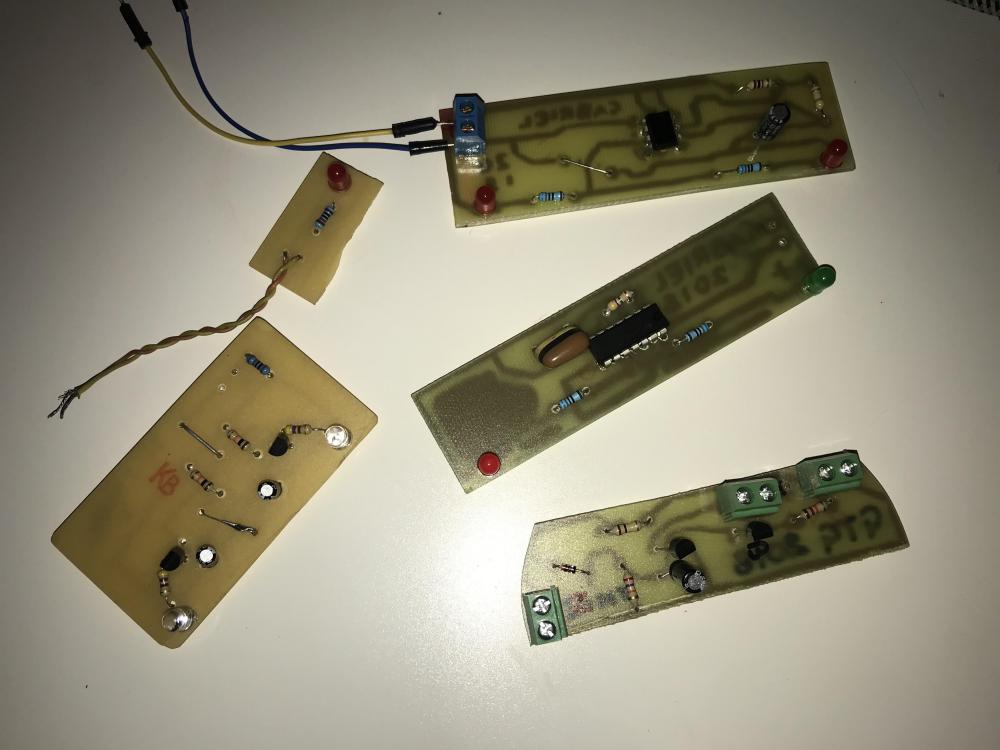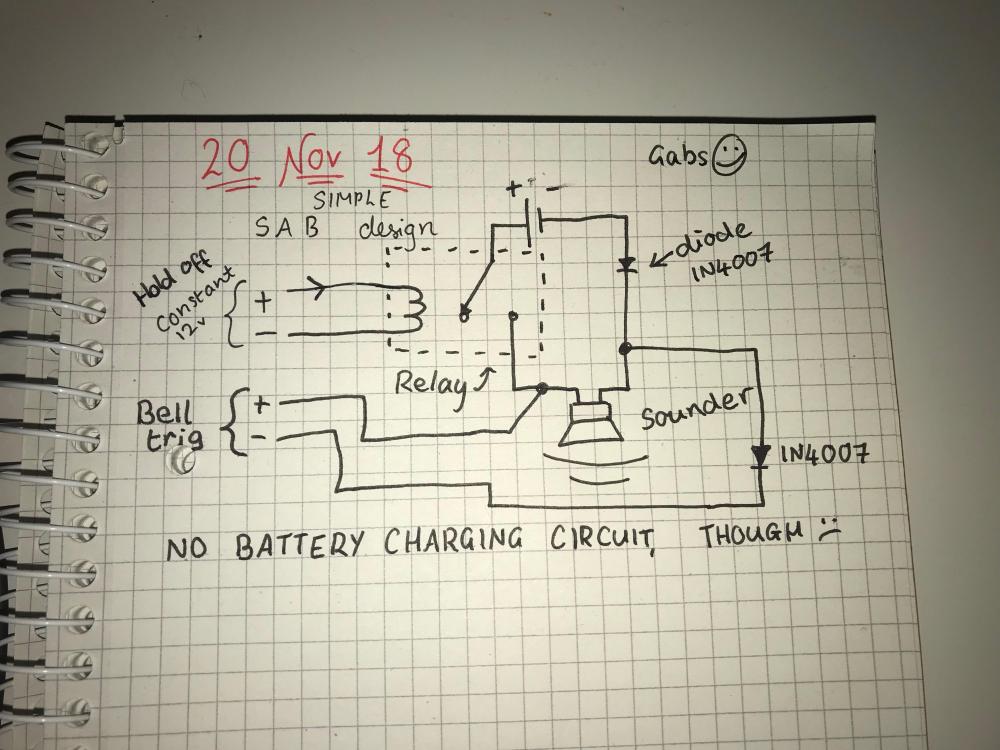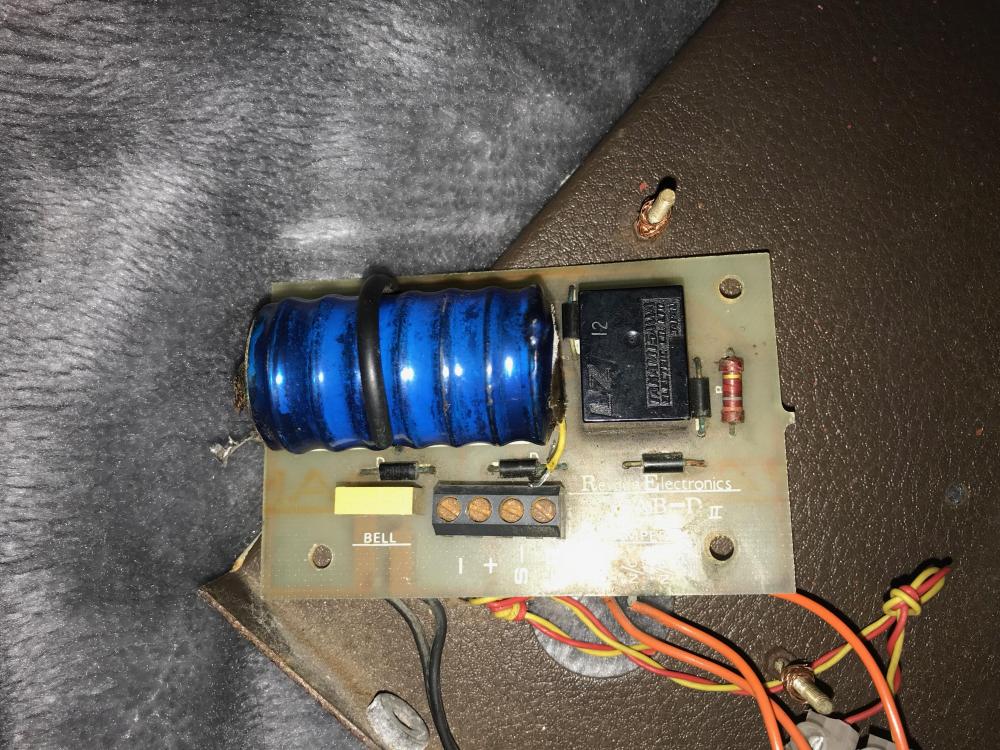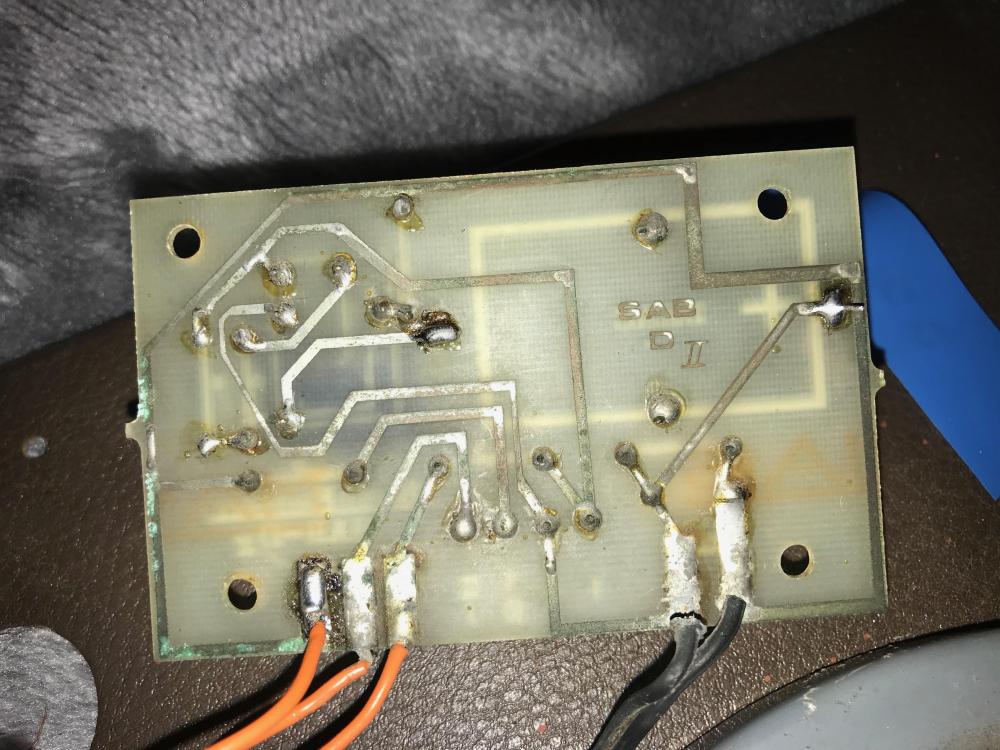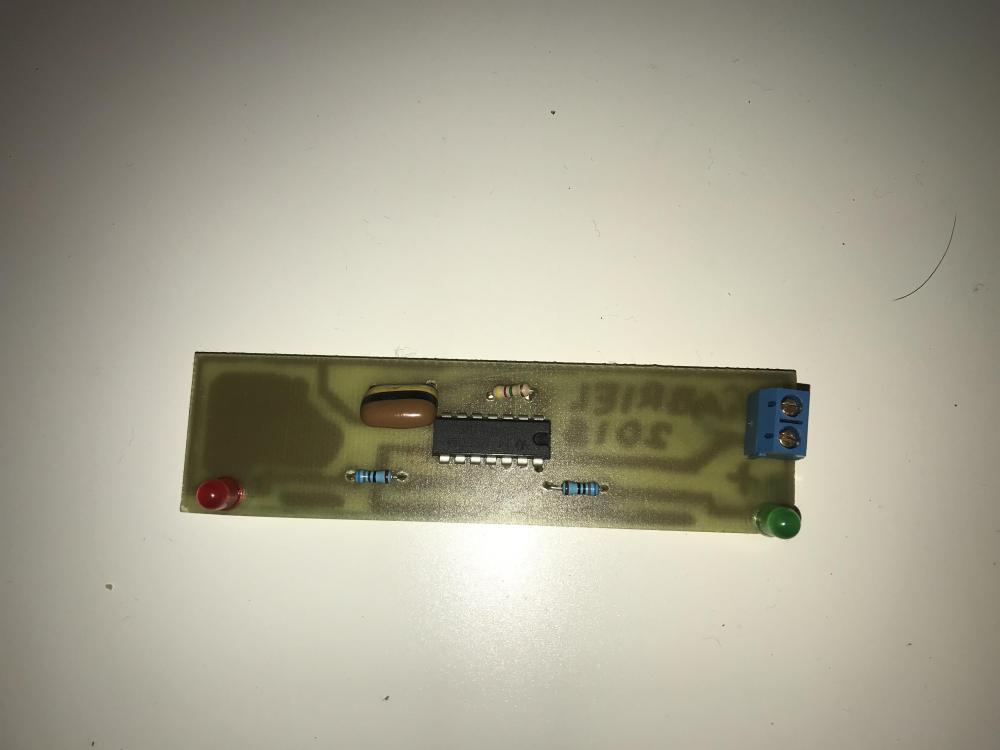-
Posts
292 -
Joined
-
Last visited
Content Type
Profiles
Forums
Events
Downloads
Gallery
Blogs
Everything posted by Gabs
-
Thanks, I was going to start by making a key-switch panel, based around a microprocessor. I have made one around transistors before: This was on a hand etched board, that I made. I used a paint marker to draw on the tracks, for all of the components. I will have a look at the site though. I have some CMOS chips, I may use to make an alarm, to panel. I made some bell box comfort LEDs swell, this way. I like the rewarding feeling of building circuits. The circuit pictured above is. A very basic transistor latch, it would need a relay to be able to switch any decent siren on, however its correct draw is practically zero. I was thinking of trying to mimmic the Accenta's keypunches of 4 and 9 (SOS) with an Arduino, this would be a good way of testing if I can use my own. Do you know what type or brand of microprocessor is used in most alarm panels, PIC or ATMEL. I think the Accenta has a Pic Microcontrollers but not sure, the NVM chip can't be found on the G3, so it may be held in the microprocessor.
-
Thanks for the reply, reason for me asking all this is that I am going to have a go at building my own panel, baed around an Arduino board: https://en.wikipedia.org/wiki/Arduino I will have a look at that type of serial transmission, hopefully I can have a go at programming something to recognise it. I can see a problem with the speed and efficiency, according to my oscilloscope, when pressed, the keypad sends the data out in a burst that lasts only 24 ms in total, so very fast. Do you know if all alarm panels use this method? Or is it just ADE panels? WHere have you gotten your knowledge on this from, did you design alarm panels at one time? Thanks, Gabs
-
Wow, thanks for the reply, think I understand it I understand that, but still am unsure how the keypad can drop the 5v that the panel is sending it, when a button is pushed. I would have thought that the Comms was always at 0v, and would only become active with 5v when a button is pushed, the Accenta has a different Tamper loop, with the comms disconnected, but everything else left in place, none of the keypad buttons work, as it is only this line the signal is send down. I have an early Accenta LCD keypad, and it works with his panel, using exactly the same drops in voltage, so it can recognise them and then displays vague messages on the screen, not as good as the G4 one. If I was designing an alarm, I'd have made it like this, If one or 2 were pressed, then the button number would correspond with the number of 5V Square waves are sent. Can you think of any reason, the ADE didn't do it like this? Or have any alarm manufacturers done it like this? Thanks, Gabs
-
ANY HELP IS GREATLY APPRECIATED Would anyone be able to help me in finding out how a keypad talks to the main panel, I have an oscilloscope asd I have connected it to the 'Comms' wire, when the Accenta keypad is connected to the panel. This wire is at a constant 5 volts, with dips in this voltage when a button is pressed, or the panel needs to send the keypad information. This first image shows the data line between the panel and keypad when 1 has been pressed, these dips in the 5 volt signal were created by the keypad, for the panel to recognise. The above image shows what happens when the 'PROG' key is pressed. The highlighted in red waveform is the keypad sending the Prog signal to the panel, the one in green is the panel responding to the keypad telling it to light up all LEDs. What I do not understand is how the keypad can create a dip in the 5v line if the panel is constantly giving out 5v, same with the panel, how can it then create a drop in the voltage in the data line, if the keypad is constantly giving out 5v. The only way I thought it could be done was the panel shorts out the keypads data line, and the same with the keypad, it shorts out the 5v of the keypad to create 0v in the 2 way data line. Just wondering if this is correct? If anyone knows. I have tried the sound line, however it doesn't carry any data, just 'beeps' and alarm tones.
-
Shame it is out of stock. Looks quite advanced for one. I will just have to try trial and error for my design, I have one, but it would only be one time use, as it wouldn't be charged up again
-
Might have been, taken any of them down recently? I would try to design the circuit like that, just don't want to damage my panel, if it goes wrong. I have built a few Security-Related circuits recently, Don't know anywhere that would sell old stock SABs
-
I will just do that, then. I can solder one straight to the board. The dilemma still lies in the battery charging circuit, I think a 1 watt resistor would do, constantly powering the battery until it is needed, that is why ideally I have an SAB module to copy the circuit from, and understand how it would be charged. Was going to see if I could get it to work with this, once I have built it http://www.zen22142.zen.co.uk/ronj/sh.html
-
The idea was just for a microswitch to go straight to to SCB of my Accenta panel, I could route it through my SAB module, but it would just be two tracks, from one terminal block to another. Could be done with standard 6 core wire, too. 2 for the Tamper 2 for the Hold Off voltage 2 for the Siren
-
I was going to do that, butt thought it would be a little easier to use the + and -, I could keep everything positively charged inc the siren, and then I would be able to make it a neg trigger, but since I have terminal block in sets of 2, the full on + and - should do, just use an extra core. I remember that, it works with the panel, which I still have. It is good, for an early panel, all hand-etched boards in it
-
-
Yeah, that is correct, the negative of the battery goes into the relay. It would be very easy to make a bell module with no charging circuit, you'd only need a relay. Board looks hand-etched too. And it could be SCB, it is powering a bell, not an electronic siren, so I can't imagine that battery lasting long anyway. It amazingly still holds a charge.
-
I will take that into consideration, those cells are much safer than lithium ones, but I'm surprised at how little there is in the way of circuitry on the board of the SAB I have, is the battery constantly charged until needed? I have ordered the relay I will be using for my circuit
-
got these two photos of a very old one I have, but its not brilliant, that's why I'm setting myself the challenge to design and make a new one
-
Thanks for the reply. I actually used a CMOS 4001 chip, and it worked pretty well. I was thinking of using a betray like this: https://uk.rs-online.com/web/p/coin-button-rechargeable-batteries/0525815/ bit safer than a Lithium one. Thanks, I'd appreciate that, I have a basic circuit design, just not sure of it at the moment.
-
Some time ago, I was directed to this site http://www.zen22142.zen.co.uk/ronj/shs.html when asking about an alarm panel schematic, I am in the process of building a panel from this website, however, I was wondering if anyone had a schematic I can use to make an SAB module, or bell module, or even if they have one would be able to get a photo of its PCB tracks, and components, so I could have a go at tracing them back out. I have an idea for a circuit, its the Ni-Cd battery charging bit I'm unsure of, any help would be much appreciated. I have included a photo of a CMOS LED flasher I made, this could be the comfort LEDs of the bell box, Gabs
-
Sounds very reminiscent of my school, that I have just left. I took product design as a GCSE, but was never given the task to do anything as exciting as make my own alarm panel. Do you have any pictures of the alarm panel that you made? I'd be interested to see Sounds like a funny thing to do, although it would ruin the books
-
That's good I have decided that I will probably build one of the transistor panels from Ron's site, so the components will help me there, thanks Yeah, it is. Shame Velleman don't make alarm kits, they mainly do things to do with lighting, so not as good.
-
Thanks, I'll have a look at that, schematic looks pretty big though, more complex than the Logic 4
-
What bits and pieces do you have? Old components, panels? Or just a mixture of things? Just curious, before I go off to Maplin and buy some Transistors for a Circuit on Ron's site
-
That's bad that you were accused of buying it, but it also says it was better than anything the teacher was expecting. With old parts, if I make my own panel, I'll have a go at vacuum forming a casing for it, would be rather rewarding to do, making the panel from scratch.
-
Yeah, would weigh much less. Have you ever tried making your own alarm panel?
-
Yeah, the metal ones seemed to offer much greater security than the plastic ones. Although the plastic ones look nicer, well, as nice as a black and white plastic box can look. Think white is the best colour for a panel
-
Cheaper than the Accentas then. I can see why it cost that, I guess a lot of thinking and design went in to it. Thanks, that'd be great. I always have this tab open, so I'll just check my PM every now and again. Thanks, I have always been interested in this sort of stuff, I was thinking of building something like this http://www.bentleysecurity.com/ that my be more simple.
-
Wow, thanks for the replies guys I will look on his site, I actually have been using and learning with my Arduino Microcontroller, in this picture, it is connected to my Accenta G3, I made a Mission Impossible stile beam break detector hooked up to Zone 4, so an instant alarm when set. I will have a go at some projects from his site tomorrow before I take on the Logic 4, which was probably designed by an engineer with a lot more experience than 16 year old me I have built sme things, I etch my own PCBs as well, to put my very small projects on. I'll also add a picture of a PCB that I have made, it was designed to be an LED version of a Airbus A320 wing strobe Ah, the microprocessor stuff does sound much more complex, I'll stick to the basic ICs for now And let my knowledge rise first. I actually have a kit similar to the Tandy one, it was my Dad's he gave to me at quite a young age, before I started messing on with proper alarm panels. I have an Arduino microcontroller, which I made wok with my ADE simple set reader, which as fun, thy worked together really well, making the Arduino control a siren, depending on the relay state of the set reader. I know, I would be quite interested actually o see how the Logic 4 and Optimas were designed, the PCBs have quite clearly been designed by a computer program, although I do not know of any PCB design programs existing back in the early 1990s. I have just ordered 50 555 timer chips, so hopefully I'll be able to design something good with them, and other chips I have. I guess they were designed with simplicity for the user in mind, that's what I like about ADE, nothing is ever too hard to do on their panels. How much was the Logic 4 at the time?


